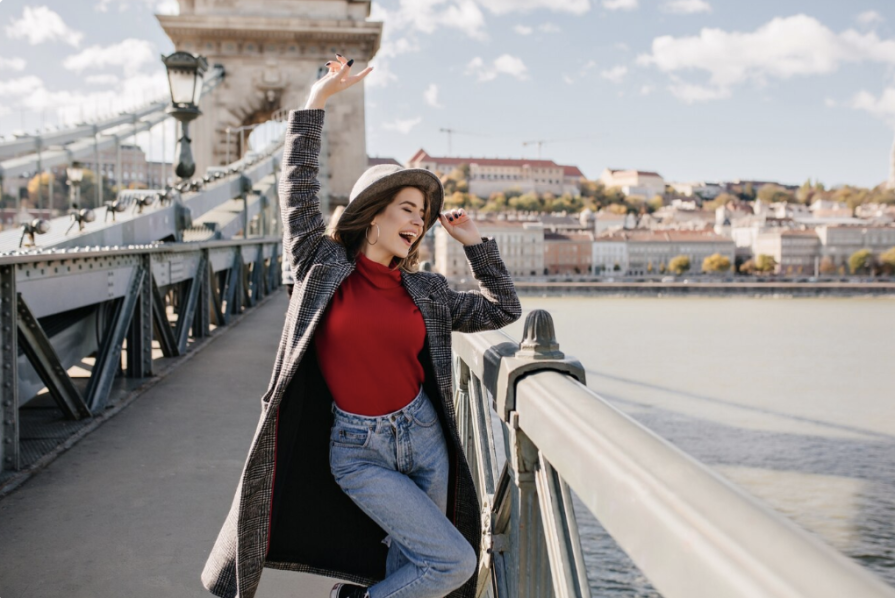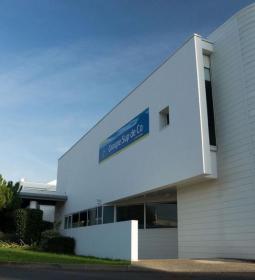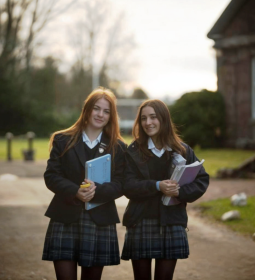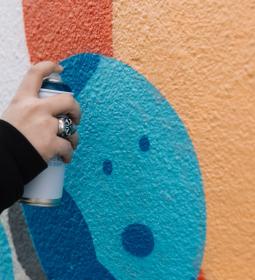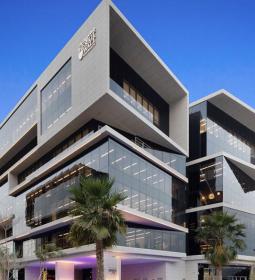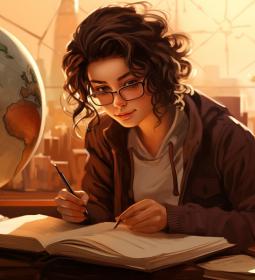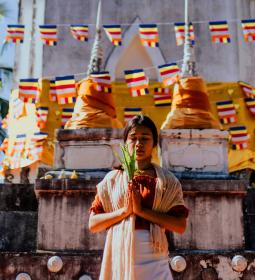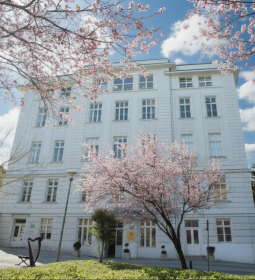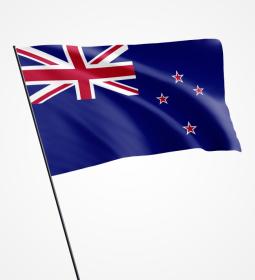Famous for its museums, open-air markets, mountains of chocolate and shops, Geneva is truly the gem of Switzerland. Surrounded by the Alps, this is the “city of the world”, where there is always something to do, where to stay and what to try!
Several languages are spoken here, but the main one is French; but it is also an international destination, which is why many people speak English.
The main currency is the Swiss franc, although most restaurants, bars, cafes accept euros. Credit cards are widely accepted and ATM machines are available.
Climate in Geneva
Geneva has warm summers and cold winters. The best time to visit is June-October , when the weather is warm enough for walking, beaches and patios are open, open-air markets work, and music festivals are held. The temperature reaches 26 ° C. This is the busiest time to visit the city, so expect prices to be at least 20% higher. In winter, the average temperature is -2ºC.
Transport in Geneva
- The easiest way to get to Geneva is to fly to Geneva airport, which is located 4 km from the city center. Instead of taking an expensive taxi, grab a train ticket when you claim your luggage and get a free ride to town. The journey takes only 6 minutes and there are regular departures. There are also bus and train travel options if you are coming from another European country.
- Taxi drivers are required by law to speak English, so they will be more convenient for you if you do not speak French. Please be aware that rates go up at night, Sundays and holidays.
- If you want to rent a car, the roads in Geneva are good and the traffic is calm. The only thing to look out for is the cost of parking.
- If you want to do a bit of exercise, there is always the option of renting a bike or taking a walk. Bicycles can be rented at Rentabike at Cornavin Train Station.
Travel tip: buy the Geneva Pass ! This will allow you to visit more than 50 attractions, while saving money. In 24, 48 or 72 hours you can explore the museums, the lake, and get access to free public transport.
Get the Geneva Pass - This 1-3 days ticket provides free travel and free admission to many of the city's museums. If you buy it online, get a 10% discount. A one-day pass costs 26 CHF, a two-day pass - 37 CHF, a three-day pass - 45 CHF.
Use Couchsurfing , a service that allows travelers to stay with locals for free.
When booking accommodation (hotel, youth hostel or campsite), you are eligible to receive a free Geneva transport card. It will allow you to use any public transport (buses, trams, trains, yellow taxi boats) free of charge throughout your stay.

Attractions in Geneva
- There are more than 40 museums in Geneva, including museums dedicated to natural history, information technology, art, glass, science, the Olympic Games, photography.
- St. Peter's Basilica is an impressive example of 12th century Gothic architecture. Climb the 157 steps in the tower b for breathtaking views of the city and surroundings.
- Originally built to house the League of Nations, the UN building can be seen on tourist trips. You will see the magnificent Assembly Hall, Council Hall, Human Rights Hall, Alliance of Civilizations, and more. The tour lasts 1 hour and costs 15 CHF.
- The Jet d'Eau fountain is the most famous monument in the city. Located where Lake Geneva flows into the Rhone, it can be seen throughout the city. The fountain pumps water to a height of 140 meters and is illuminated at night.
- Visit the fun Fête des Vignerons , where the region's wineries open their doors and invite you to take part in a wine tasting session. The tasting fee is CHF 5 per glass. Geneva is the 3rd largest wine region in Switzerland with 90+ wineries. There are several wineries in Satigny, and the bus trip to the city takes about an hour, there are also wineries on the shores of Lake Geneva. If you plan on trying a lot of wine, you can take advantage of the free shuttles.
- Mont Salève attracts outdoor enthusiasts such as rock climbing, mountain biking, hiking or cross-country skiing in winter. You can take the cable car for CHF 13.60.
- The Reformation Wall is located on the premises of the University of Geneva . This is a monument to the leaders of the Protestant Reformation in Europe - John Calvin, Guillaume Farel, Theodore de Bez, John Knox. Opened in 1909, it was built into the old ramparts of Geneva.
- On the other side of the Arve River is the city of Carouge , built by the King of Sardinia, Victor Amadeus III, Duke of Savoy in the 18th century. Many of the buildings here have a strong Italian influence; the locals call this area "Little Italy". Wander streets filled with restaurants, bars, boutiques, stop by Valmandin for a coffee and a short break from exploring.
- Bains de Paquis - This pool was built in the 1930s and is still a popular massage and relaxation spot. The pool is built on the shore of the lake, equipped with a springboard. In summer you can also enjoy the hammam - the baths are open daily and cost CHF 10. The outdoor pool is closed in winter, but you can still use the sauna, hammam, Turkish bath for 20 CHF.
- The Temple of Saint-Gervais is built on the foundations of a 4th century sanctuary and a 10th century Romanesque church. In the 16th century, during the Reformation, it became a Protestant church; at the end of the 20th century, excavations uncovered the remains of a Gallo-Roman temple.
- Food tours are one of the best ways to get to know the city. They research local history, culture, food. Local Flavors offers a chocolate historical tour of the old town: you will learn about the origins, history of chocolate in Switzerland, see the Old Town, taste the chocolates of local masters.
- Free walking tour, duration - 2-2.5 hours, led by a local guide who loves the city, history, culture.
- In summer, there are many open-air concerts and festivals. In June, Fête de la Musique is a three-day music festival filled with free continuous concerts, parades, events, bargain stalls. The Geneva Street Food Festival also takes place at the end of June. In August, look forward to the Geneva Festival La Batie , a 16-day festival of contemporary music and theatrical arts. Swiss National Day August 1: This is the perfect time to watch folklore performances, climbers, yodeling, fireworks and more! The Geneva International Film Festival takes place at the end of October-November. In winter, the calendar of festivals and events slows down a bit. In November, December, the Christmas market is open, which sells Swiss food, handicrafts, mulled wine. The Fête de l'Escalade takes place in December and marks the liberation of the city from captivity in 1602 with a parade with torches and old clothes.
Food in Switzerland

Culinary Switzerland is a gourmet paradise that can be re-explored wherever you go, as the menu mainly features regional delicacies in addition to national dishes. Swiss cuisine combines influences from German, French, North-Italian cuisine, it varies greatly from region to region, the linguistic divisions form a rough border. Many dishes have transcended local boundaries and have become favorites throughout Switzerland.
- Cheese fondue - processed cheese with bread cubes. The bread cubes are picked up on a fork and turned in melted cheese served in a traditional ceramic fondue pot called kakelone .
- Raclette - processed cheese served with Gschwellti (jacket potatoes), cocktail gherkins and onions, pickled fruits.
- Älplermagronen is a type of casserole with potatoes, pasta, cheese, cream and onions. And most importantly - stewed apple for a side dish.
- Rösti is a flat hot pie made from grated or raw potatoes, fried in hot oil or fat.
- Birchermüesli - Invented in 1900 by the Swiss physician Maximilian Oskar Bircher-Brenner, the pie contains oatmeal, lemon juice, condensed milk, grated apples, hazelnuts or almonds.
- Swiss chocolate came to Europe in the 16th century, at the latest by the 17th century it became known throughout Europe. In the second half of the 19th century, Swiss chocolate began to gain popularity abroad. The invention of milk chocolate by Daniel Peter and the development of conching (chocolate fudge) by Rodolphe Lindt brought fame to Swiss chocolate.
- Fish dishes such as powan, perch and trout are popular in the Lake Geneva area, Neuchâtel and Biel.
- Dessert Gâteau du Vully (cream pie), Moutarde de Bénichon (very sweet mustard) are popular dishes that, like Cuchaule AOP (typical saffron bread), come from the canton of Friborg.
- Haselnusslebkuchen (hazelnut gingerbread) - sweet dough consists of a fragrant dough of ground hazelnuts, sugar and egg white.
- Meitschibei sweet biscuits are also made with hazelnuts.
- Basel is famous for Basler flour soup , which is traditionally served during carnival (Fasnacht) with cheese and onion tart, as well as s uuri Lääberli (sour liver strips), sweet Basler Leckerli , small, relatively hard gingerbread cookies with delicious icing.
- Mässmogge are colorful, thumb-length candies filled with a mixture of brown hazelnuts. This is Basel's regional, seasonal dish. These sweets are sold at Swiss festivals and fairs. The Mässmogge season reaches its climax at the Basel Autumn Fair (Basler Herbstmesse) at the end of October.
Mobile communications in Switzerland
For a relatively small country, Switzerland's mobile sector is surprisingly competitive. There are three main operators in the country, each with its own network: Swisscom, Salt Mobile and Sunrise Mobile . In addition to these three, there is a growing number of MVNOs (Mobile Virtual Network Operators) that operate using one of these three major networks. If you need home Internet and / or television, many operators offer discounts if you order more than one service.
Other mobile operators in Switzerland:
- VTX
- Aldi Mobile
- M-Budget Mobile.

